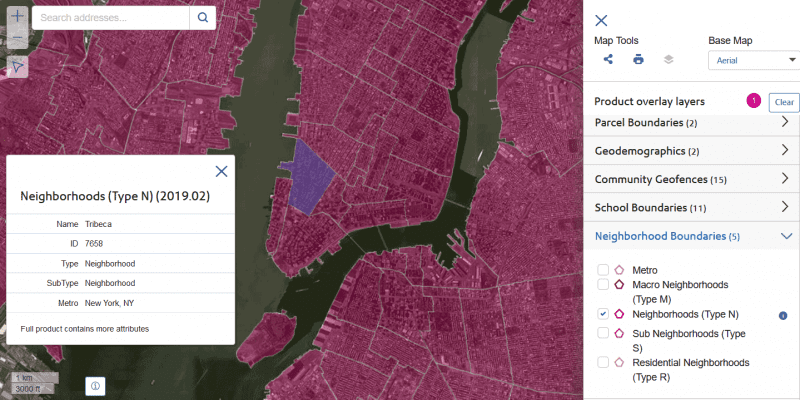Modern data analytics tools make it possible to apply context to data in a myriad of distinct ways. Historically, data analysts have aggregated consumers into broadly defined groups. Nielsen Media Research, for example, provides rating information for people from the ages of 13 to 17, 18 to 24, 25 to 34, and so on. This approach is useful, but it provides limited opportunities for insight. Data enrichment will add context to existing data.
Age is only one of many demographic dimensions that can help you better understand a particular population. With data enrichment, you combine age with other demographic information such as gender, race, and income, you get a much more complete picture of your audience.
Modern computing technology has dramatically increased the potential for understanding the world with a detailed and nuanced perspective. Data mining and artificial intelligence make it possible to apply a richer context to business data and to draw conclusions that will improve lives and increase profitability. Data enrichment enables you to apply additional layers to existing business data, enabling managers to see the world through multiple dimensions and gain greater insight into consumer behavior, potential new opportunities, and risks.
Location, location, location
Consider the proliferation of location-based data. The vast majority of business data relates to location in one way or another. Historically, it has been difficult to apply geographic context in a very sophisticated manner. Traditionally, geospatial information has been used in terms of customer addresses, traffic patterns, and population. With the advent of mobile technology, the Internet of Things (IoT), GPS, and other location-aware technologies, there is a greater potential than ever before to understand your customers and the world they inhabit.
Today, businesses have access to third-party data sources that open up a whole new world of opportunities. Location data is no longer limited to postal codes or street addresses. Geospatial data incorporates a wide range of information, including rainfall and temperature, hydrography, ownership and tax parcel information, governmental jurisdiction, separated rights and encumbrances, and much more.
Many of these data sources, moreover, can compensate for idiosyncrasies that have been problematic for data scientists in the past. Yum Brands, for example, owns and operates multiple franchise restaurants, including Pizza Hut, KFC, Taco Bell, and others. Rich data sources can recognize a specific brand (such as Pizza Hut), regardless of whether it is a company-owned site or a franchise location; and they can roll up multiple brands (such as Pizza Hut, KFC, and Taco Bell) under a single corporate umbrella (Yum Brands).
Read our analyst report
The Data Differentiator
The role data plays in enabling future technologies is critical—but one that will be undermined if businesses do not make data quality a priority.
There are countless potential applications for using location data to produce better outcomes. Here are three areas where geospatial information can produce tangible business benefits.
1. Understanding buyers
Every company has some kind of baseline information about the customers they serve and the transactions in which those customers engage. Usually, there is already some location-specific data associated with each customer record (such as a home address or warehouse location), or with each transaction record (such as a store location or delivery address).
Consider a fairly typical B2B product distribution business, for example, an office supply company that operates several distribution centers across multiple states or provinces. A simple location analysis might help define the catchment area for each distribution center, that is, the geographical area from which the company draws its existing customers.
By applying a second layer, such as the locations of direct competitors and specialty big-box chains such as Staples or Office Depot, managers can gain insights into the competitive dynamics in the areas that they serve.
The richness and variety of location data go deeper, though. In addition to the formal boundaries with which everyone is familiar (e.g. city and state borders), most geographies can also be subdivided along less formal lines. New York City, for example, incorporates a diverse collection of neighborhoods, each with its own unique character. Many rural areas, likewise, have a sense of “place” that impacts customer behavior and mobility. In many cases, these kinds of informal boundaries may have an even greater impact on buying behavior than actual municipal borders.
By combining these dimensions with other data layers such as social media preferences, commuting patterns, income levels, and online purchasing behavior, business managers can gain a richer view of potential buyers than ever before.
Sample boundary data in Precisely Data Experience. Try it now for free!
2. Understanding opportunities
Following the previous example, an additional data layer might incorporate information about business demographics within and around the catchment area, which can, in turn, help managers to identify under-served segments of the market.
Business leaders can identify customer needs by drawing connections between location-specific data (such as weather, for example) and purchasing patterns. Walmart is famous for the efficiency of its supply chain and logistics operations. Walmart has years of data that show what consumers buy when a disaster strikes. More importantly, the company understands the very different implications of a hurricane versus a winter storm. By cross-referencing weather predictions with other location-based data and historical sales, companies like Walmart can prepare in advance to deliver the right product to the right place when buyers need it most.
Location data is increasingly being used to drive site-selection decisions for new stores, and for public accommodations such as hospitals, urgent care facilities, and emergency services.
3. Understanding risk
These kinds of analyses have been commonplace for years in the insurance industry, but the level of detail available now enables the experts to go even further. By understanding whether a policy holder’s driveway faces a main thoroughfare or a side street, an insurer can better assess the likelihood of an auto accident.
By combining existing business data with layers of contextual data such as location and consumer behavior, managers can better understand the various factors that impact their businesses. Data enrichment is about seeing the world in a more nuanced way and adding context to existing business data. The results can help leaders to identify patterns that reveal buyer behavior, discover new opportunities, and inform better decisions.
Read The Data Differentiator to learn more about using data enrichment to improve your decision-making.








